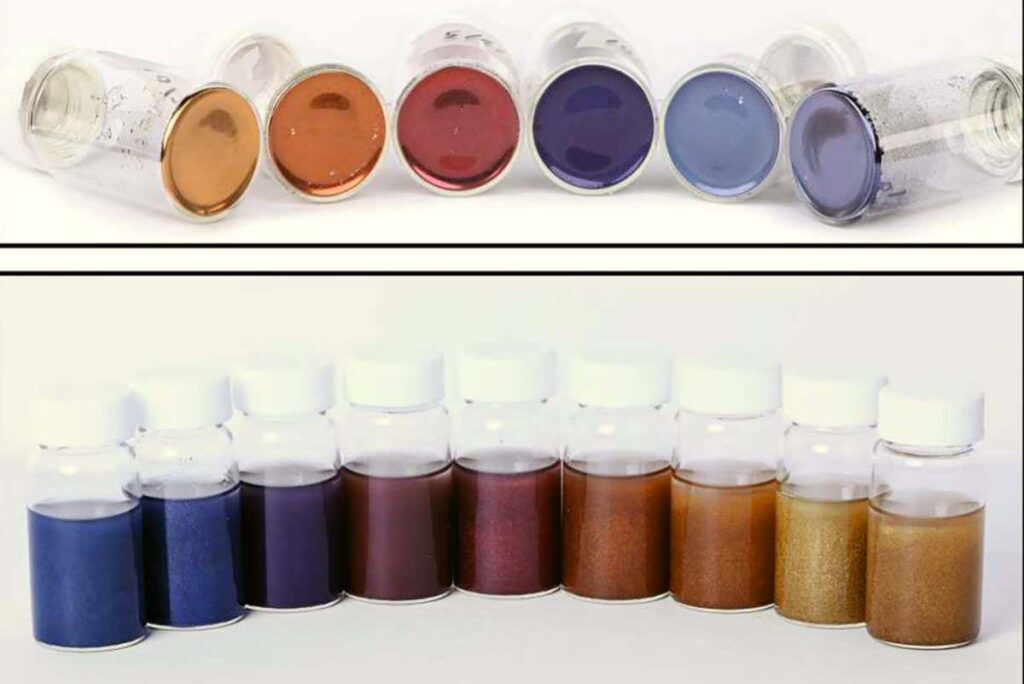Adjusting the distance between nanoparticles creates different colours
Pablo Cencillo-Abad, Daniel Fran
A nanotechnology paint inspired by a butterfly’s wing is so lightweight that using it on a Boeing 747 could cut the plane’s mass by half a tonne.
A paint’s colour normally comes from pigments, which are molecules that absorb certain wavelengths of light and reflect the rest. Some of these pigments can be environmentally polluting, difficult to remove and they can fade over time, especially in extreme heat or under prolonged sunlight.
Now, Debashis Chanda at the University of Central Florida and his colleagues have designed a pigment-free paint that instead uses flakes of aluminium nanoparticles that trap and resonate certain wavelengths of light, just as certain wavelengths of sound can resonate a wine glass. The trapped wavelengths are akin to the absorption in pigments, giving the nanomaterial a characteristic colour.
This phenomenon is structural resonance, which also gives colour to a butterfly’s wing. “The colour is not based on any molecule which absorbs light, it’s simply the structural arrangement of colourless materials,” says Chanda.
To make the paint, Chanda and his team used a beam of electrons to deposit aluminium nanoparticles on a mirror of the same material. The distance between these particles, which is set by how quickly the particles are deposited, determines the wavelengths of light that they “absorb”, with the leftover wavelengths being the colour of the paint. This means Chanda and his team can easily choose the paint’s colour.
The team then flaked these nanoparticle sheets and mixed the flakes with linseed oil to make paint. A coat of the paint only needs to be 150 nanometres thick, making it incredibly lightweight. A Boeing 747 covered with this would require just 1.3 kilograms of paint instead of 500 kilograms for regular paint, says Chanda.
The paint is also highly reflective, so could be used to keep cars or homes cool, and the lack of pigment means it won’t fade.
The optical effects of these nanostructures have been demonstrated in the laboratory for decades, says John Pendry at Imperial College London, but making paint with them is new. “The achievement that these guys have done is to take these known effects and realise them in a pretty standard industrial process,” he says.
Topics:


